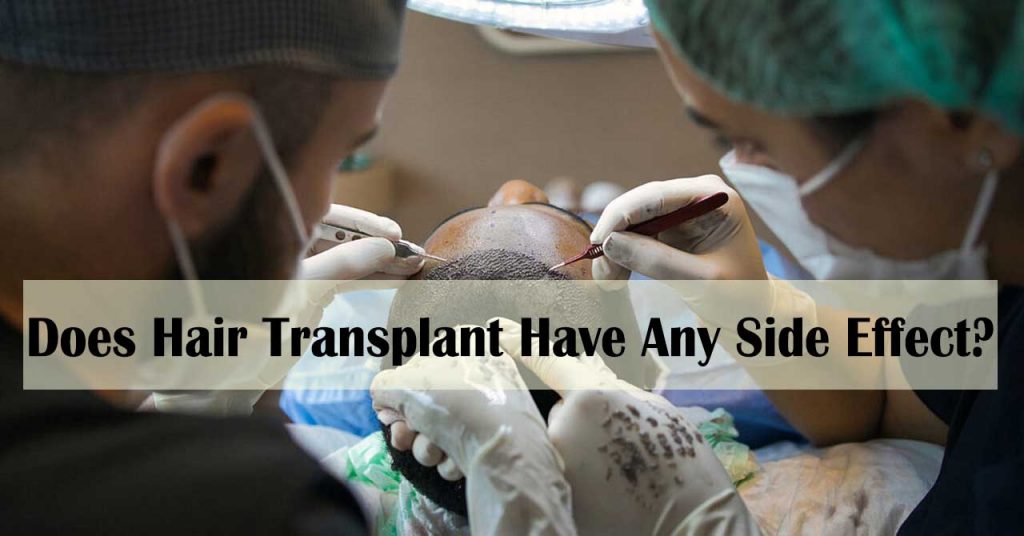
Hair transplantation is a surgical treatment that involves transplanting existing hair to regions where there is little or no hair. A hair transplant is one of the aspirations of men and women whose hair has begun to thin or shed.
Hair transplant surgery is a relatively risk-free operation. The demand for hair transplantation has grown so much in recent years that the subject of hazards linked with hair transplantation or side effects of hair transplantation has received a lot of attention.
After hair restoration, every patient has certain side effects like hair transplantation infection or scar which is very normal. Let’s discuss more about it here.
Scalp bleeding:
One of the most prevalent hair transplants adverse effects is bleeding. Bleeding is a possible adverse effect of hair transplantation surgery in rare instances. While some bleeding is unavoidable, it is managed with simple methods. Constant bleeding, on the other hand, may necessitate further stitches.
Scar:
Following hair transplantation, some patients have noticeable scars on their heads. Scarring at the donor site is mostly determined by the graft extraction method. As a result, the wave of inclusion for scar side effects is restricted to invasive methods. Transplantation of Follicular Units FUT is a procedure that leaves a scar during the graft collecting process.
Infection:
If the surgery is conducted in the proper conditions, infection rates with hair transplants are minimal. When germs invade open wounds near the donor hair follicles or at the reception site, an infection might ensue. The extensive network of blood arteries in your scalp helps your immune system to swiftly target invaders. However, if your symptoms worsen rather than improve, or if they last more than a week, you may have an infection.
Swelling:
Swelling is a rather uncommon hair transplant adverse effect. The forehead and eyes are the most typically impacted areas of influence. While bloating usually lasts a few of days, it can last much longer in extreme situations.
Pain
While many operations causes radiating pain afterward, it is also one of the hair transplants’ adverse effects. When aches become severe, drugs can help alleviate the condition, although, in most situations, the discomfort is tolerable. Pain is usually a transitory side effect that fades away after a time.
Cyst:
Cystscysts
Is there any permanent loss?
Transplants have intrinsic problems, which are natural. It comprises both bleeding and infection. Scarring and the illusion of fake new hair growth are other possibilities. The donor area is the area from which resistant follicular units to hair loss are removed for transplantation. Donor hair is a limited supply of grafts since the grafts extracted from the donor area are not renewing.
Despite today’s advanced technology, the hazards of hair transplantation are negligible. You should consult with your doctor to learn about and assess these risks. Your mandatory evaluations should be completed entirely before the procedure to establish the most appropriate hair transplant for you. In this approach, the risks of hair transplantation are reduced.
Pain during and after surgery is a common side effect. Almost everyone feels this agony. Local infections can occur in both recipients and donors. Low and severe infections are uncommon, and may be associated to poor hygiene, substantial crust growth, or pre-existing medical issues.
References
https://www.treatmentroomslondon.com/aftercare-recovery/hair-transplant-side-effects/ https://www.stylecraze.com/articles/side-effects-of-hair-transplantation/ https://www.treatmentroomslondon.com/aftercare-recovery/hair-transplant-side-effects/
Side Effects and Risks of Hair Transplantation Surgery
10 Side Effects Of Hair Transplantation You Should Be Aware Of
Read Also: Why Peoples Are Choosing Laser Treatment Over Other Hair Removal Methods






































